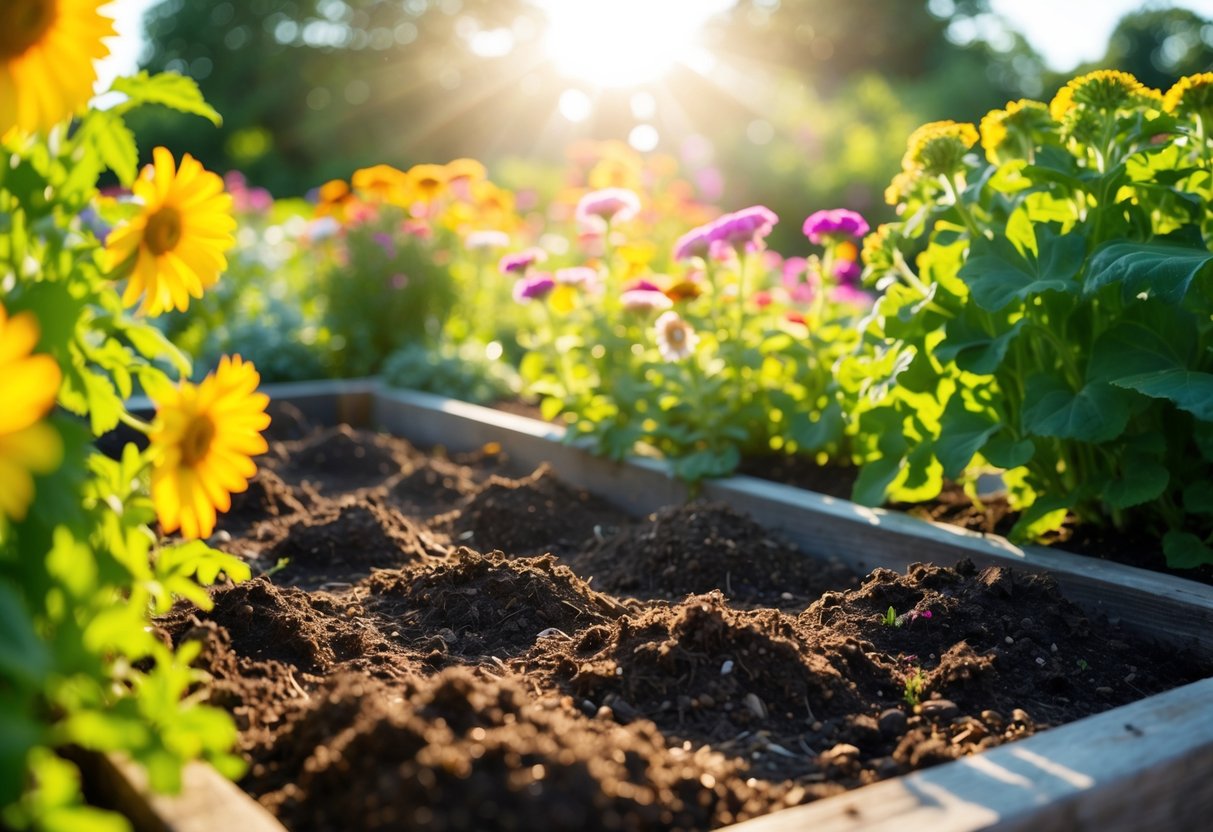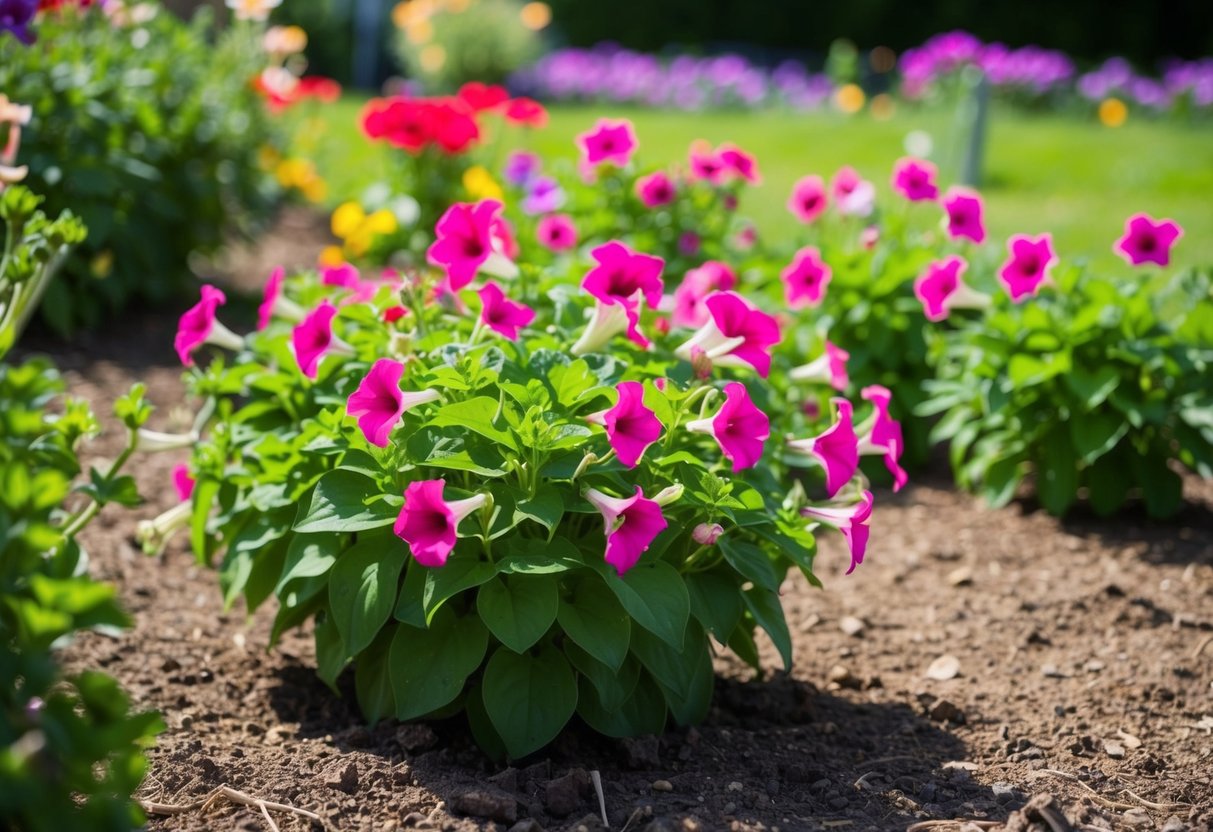Where is the Best Place to Plant Petunias: Ideal Spots for Vibrant Blooms
Finding the perfect spot to plant petunias can make all the difference in their bloom. The best place to plant petunias is a location with full sun that receives at least six hours of sunlight each day. This vibrant annual thrives in sunlight, producing the most blooms and adding a splash of color to your garden. If you live in a particularly warm area, some afternoon shade can help keep your petunias from wilting.

Petunias come in many varieties and species, each with its own unique charm. Whether you’re planting them in containers on your balcony or directly in your garden, these beauties are adaptable and love well-drained soil.
Consider enriching the soil with compost to promote healthy growth and abundant flowering.
Space is important when it comes to planting your petunias. Be sure to plant them 12 to 18 inches apart to allow room for their growth. This spacing helps them stay healthy and flourish throughout the season, ensuring you enjoy their bright blooms all summer long.
Selecting the Right Petunia Varieties

Choosing the right petunia varieties can enrich your garden with color and resilience. You’ll want to consider the types of petunias for different shapes and sizes, as well as the colors and patterns that best match your garden theme.
Understanding Different Types of Petunias
There are several types of petunias you might consider. Some of the most popular include grandiflora, multiflora, and milliflora. Each has unique features that can add character to your garden.
Grandiflora petunias are known for their large, showy blooms. If you wish to fill your garden with eye-catching flowers, grandifloras are a great choice. In contrast, the multiflora varieties produce smaller blossoms but make up for it with lots of blooms. Milliflora petunias are perfect if you have limited space, offering miniature flowers that are both charming and easy to manage.
Color and Pattern Varieties
Petunias come in a rainbow of colors ranging from white, pink, and red to purple and blue. You can find them in solid colors or vibrant patterns. Some have double blooms that add extra texture to their appearance.
Consider choosing petunias with unique patterns like stripes or veined designs. These patterns can create a varied and exciting look. Some varieties, like the Supertunias and Cascadia, are particularly known for their striking color patterns. They are bred for weather tolerance and continuous blooming.
Grandiflora vs. Multiflora vs. Milliflora Petunias
When deciding between grandiflora, multiflora, and milliflora petunias, think about the space in your garden. Grandiflora petunias can grow large and sprawling, making them ideal for hanging baskets or pots where their size will be showcased.
Multiflora varieties are hardier, withstanding adverse weather better than grandifloras, so they are well-suited for garden beds where they can spread. For compact spaces, milliflora petunias are perfect; they’re small but persistent bloomers. Knowing these differences can help you choose the right type for your specific garden needs and conditions.
Ideal Growing Conditions for Petunias

Petunias thrive in specific climates and soils. Ensuring proper temperature, sunlight, and soil quality can help your petunias grow strong and vibrant. Each factor affects how well your flowers will bloom and grow.
Climate and Temperature Needs
Petunias flourish best in warm climates. They prefer a frost-free environment and can be planted once the risk of frost has passed. Ideal temperatures for petunias range between 60°F to 75°F during the day. At night, they can withstand slightly cooler temperatures. If you’re in a colder region, consider starting your petunias indoors or in greenhouses.
Hardiness zones that suit petunias well are typically zones 9 to 11. In these zones, they can often survive year-round. However, in other areas, they are usually grown as annuals. Pay attention to local weather forecasts, as sudden temperature drops can damage or kill the plants.
Sunlight Requirements
Petunias love sunlight and require full sun exposure to thrive. Aim for at least six hours of direct sunlight daily. A location with abundant light will encourage more blooms and healthier growth. If you’re planting in an area with limited sunlight, choose spots that receive morning sun. Full sun conditions help the plant to produce flowers instead of growing too many leaves.
In very hot climates, afternoon shade can be beneficial to prevent the plants from wilting. Overexposure to scorching sun without proper watering can lead to stress on the plants. Be sure to observe your petunias for any signs of sun damage, like yellowing leaves.
Soil Preferences and pH Levels
The right soil is crucial for petunias. They prefer well-drained, slightly acidic soil with a pH level between 6 and 6.5. Soil rich in organic matter, like compost, is ideal.
Before planting, you can add well-rotted compost to enhance the soil’s fertility. For container planting, a quality potting mix is recommended. Ensure this mix offers good drainage to prevent root rot.
If your garden soil is heavy or clayey, amending it with organic matter or sand can improve drainage. Avoid using soils that retain excess moisture, as waterlogged conditions can stunt plant growth.
Planting and Cultivation Techniques

Choosing the right methods for planting petunias can enhance their growth and appearance. From starting seeds to deciding where to plant, each choice affects how vibrant your petunias will be.
Starting from Seed vs. Buying Seedlings
When deciding how to start your petunias, you have two main options. Starting from seed can be rewarding but takes more time. Petunia seeds are tiny and require light to germinate.
Make sure to use a seed-starting mix that drains well. You might find this method helpful if you enjoy nurturing plants from tiny seeds to full blooms.
On the other hand, buying seedlings saves time and ensures that you get strong, young plants ready for transplanting. This option could be ideal if you’re looking for a quicker and less labor-intensive method. Seedlings are also beneficial for those who have limited experience with gardening.
Transplanting Young Plants
Transplanting is an important step when growing petunias. Once seedlings have developed three leaves, they are ready to be moved outside.
Select a location in full sun, with at least six hours of sunlight per day. This will ensure that your petunias develop many blooms.
Space the young plants about a foot apart to allow them room to spread. Dig holes slightly larger than the root ball of each seedling. Be gentle while transplanting to avoid damaging the roots.
Water the plants thoroughly after placing them in the ground to help them settle and reduce transplant shock.
Container and Garden Bed Planting
Petunias thrive in both containers and garden beds, providing versatility in your garden design. For containers or hanging baskets, use a free-draining potting mix with slow-release fertilizer to keep the plants healthy.
Make sure your containers have drainage holes to prevent waterlogging, which can rot the roots.
In garden beds, the soil should be light, fertile, and slightly acidic. Adding compost or organic matter to clay soils improves drainage.
Petunias make excellent ground cover, border plants, and additions to flower beds, enhancing the aesthetic appeal with vibrant colors and cascading growth.
Maintaining Healthy and Vibrant Petunias

To keep your petunias thriving, you’ll want to provide proper watering and nutrients, prune them for lush blooms, and manage any diseases or pests effectively with correct care. Attention to these details ensures they are healthy and vibrant throughout their bloom time.
Watering and Nutrient Needs
Petunias need consistent watering, especially during dry periods. Ensure the soil is moist, but avoid waterlogging as this can lead to root rot.
Fertilizing every two to three weeks with a balanced liquid fertilizer encourages robust growth and more blooms. Make sure to follow instructions on the fertilizer packaging to avoid over-fertilization. This routine supports the plants in producing vibrant flowers.
Pruning and Deadheading for Lush Blooms
Regular pruning and deadheading are essential for maintaining lush petunias. By removing faded or dead blooms, you can encourage the plant to produce more flowers and extend bloom time.
To deadhead, simply pinch off spent flowers just above the next bud. Pruning helps the plant maintain its shape and prevents it from becoming too leggy. This promotes healthy growth and increases flowering through the growing season.
Disease and Pest Management
Petunias can be affected by pests like aphids and slugs or diseases such as powdery mildew.
To manage these, you might use insecticidal soap to deter pests and practice good hygiene to prevent diseases.
Regularly check for signs of pests and remove them manually if possible. Keep the area clean and ensure proper airflow by spacing plants adequately. Companion planting can also help deter pests naturally. For disease prevention, avoid overhead watering and make sure the leaves dry rapidly after getting wet.
Designing with Petunias for Stunning Displays

Petunias can transform any garden with their vibrant colors and varied patterns. Whether you’re creating a focal point or enhancing your garden‘s overall design, petunias offer versatility. Here’s how to make the most of these blooms in your landscape.
Incorporating Petunias into Landscape Design
First, decide on the type of petunia for your garden. Grandiflora petunias are popular for their large blooms, while multiflora petunias offer smaller flowers in clusters. For compact spaces, consider milliflora petunias, known for their small size. Meanwhile, spreading petunias are perfect for covering large areas.
You can plant them in containers, hanging baskets, or directly in the ground. Trailing petunias look stunning when allowed to cascade down from a basket or raised bed. Planting in partial shade can help maintain vibrant colors, though they thrive in direct sunlight. Regular watering will aid growth but be wary of areas with high humidity.
Choosing Companions for Visual Appeal and Growth
Pairing petunias with other plants enhances the visual appeal and boosts growth. Tender perennials such as lobelia or geraniums are great companions. They can create contrasting colors, making your design pop.
When selecting companion plants, focus on similar light and water requirements. Combining various colors and patterns adds depth. For example, mixing white petunias with bright zinnias creates a striking look.
Annuals with different heights can add layers to your garden.
Choosing the right companions and planting them effectively can help you achieve a garden full of life and color that draws attention.







